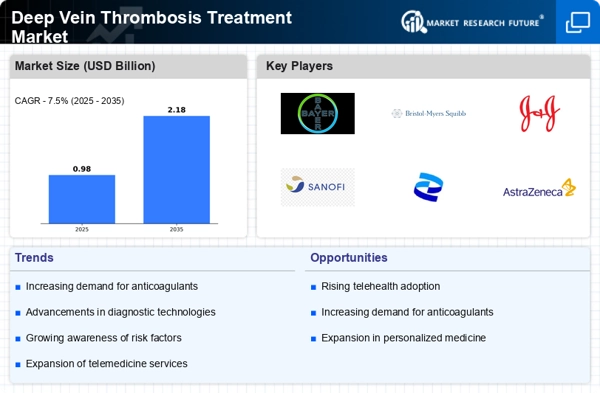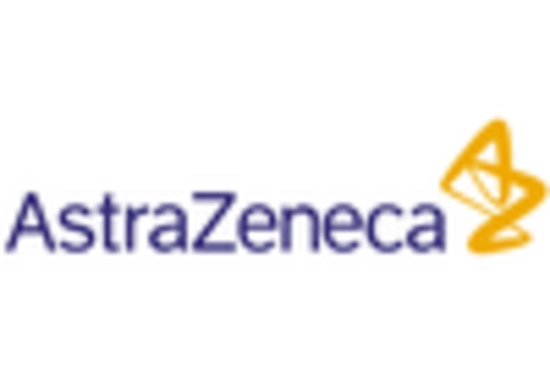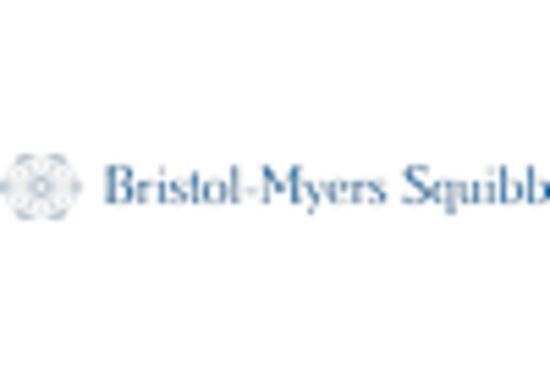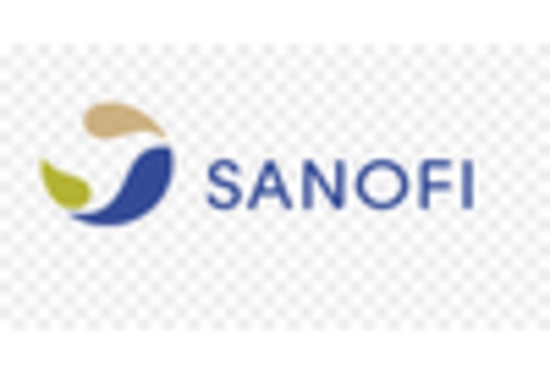Growing Geriatric Population
The expanding geriatric population is a crucial driver for the Deep Vein Thrombosis Treatment Market. As individuals age, the risk of developing DVT increases due to factors such as decreased mobility and comorbidities. Current estimates indicate that the elderly population is expected to double by 2050, which may lead to a corresponding rise in DVT cases. This demographic shift suggests that healthcare systems will need to adapt to the increasing demand for DVT treatment options. Consequently, pharmaceutical companies and healthcare providers may focus on developing targeted therapies for older adults, thereby contributing to the growth of the market.
Advancements in Treatment Modalities
Innovations in treatment modalities for Deep Vein Thrombosis are likely to enhance the efficacy and safety of DVT management, thus driving the Deep Vein Thrombosis Treatment Market. The introduction of novel anticoagulants and minimally invasive procedures, such as catheter-directed thrombolysis, has transformed the therapeutic landscape. These advancements not only improve patient outcomes but also reduce hospital stays and associated costs. Market data indicates that the anticoagulant segment is projected to witness substantial growth, with a compound annual growth rate (CAGR) of over 6% in the coming years. Such advancements may encourage healthcare providers to adopt newer therapies, thereby expanding the market.
Increasing Incidence of Risk Factors
The rising prevalence of risk factors associated with Deep Vein Thrombosis (DVT) appears to be a significant driver for the Deep Vein Thrombosis Treatment Market. Conditions such as obesity, sedentary lifestyles, and an aging population contribute to a higher incidence of DVT. According to recent data, approximately 1 in 1,000 individuals are diagnosed with DVT annually, indicating a growing patient population. This trend suggests that healthcare systems may need to allocate more resources towards DVT treatment, thereby expanding the market. Furthermore, the increasing awareness of DVT risk factors among healthcare professionals and patients is likely to lead to earlier diagnosis and treatment, further propelling market growth.
Rising Awareness and Education Initiatives
The increasing awareness and education initiatives regarding Deep Vein Thrombosis are pivotal in driving the Deep Vein Thrombosis Treatment Market. Public health campaigns aimed at educating individuals about the signs, symptoms, and risk factors of DVT are likely to lead to earlier diagnosis and treatment. Healthcare organizations and non-profits are actively promoting awareness, which may result in a higher number of patients seeking treatment. This heightened awareness could potentially increase the demand for DVT therapies, as more individuals recognize the importance of addressing this condition. Consequently, the market may experience growth as healthcare providers respond to the rising patient inquiries and treatment requests.
Regulatory Support for Innovative Therapies
Regulatory bodies are increasingly supporting the development and approval of innovative therapies for Deep Vein Thrombosis, which may significantly impact the Deep Vein Thrombosis Treatment Market. Streamlined approval processes for new anticoagulants and treatment devices are likely to encourage pharmaceutical companies to invest in research and development. This regulatory support could lead to a surge in the availability of effective treatment options, thereby enhancing patient access to care. Market analysts suggest that the introduction of new therapies could potentially reshape treatment protocols, making them more effective and tailored to individual patient needs, thus driving market growth.

















Leave a Comment